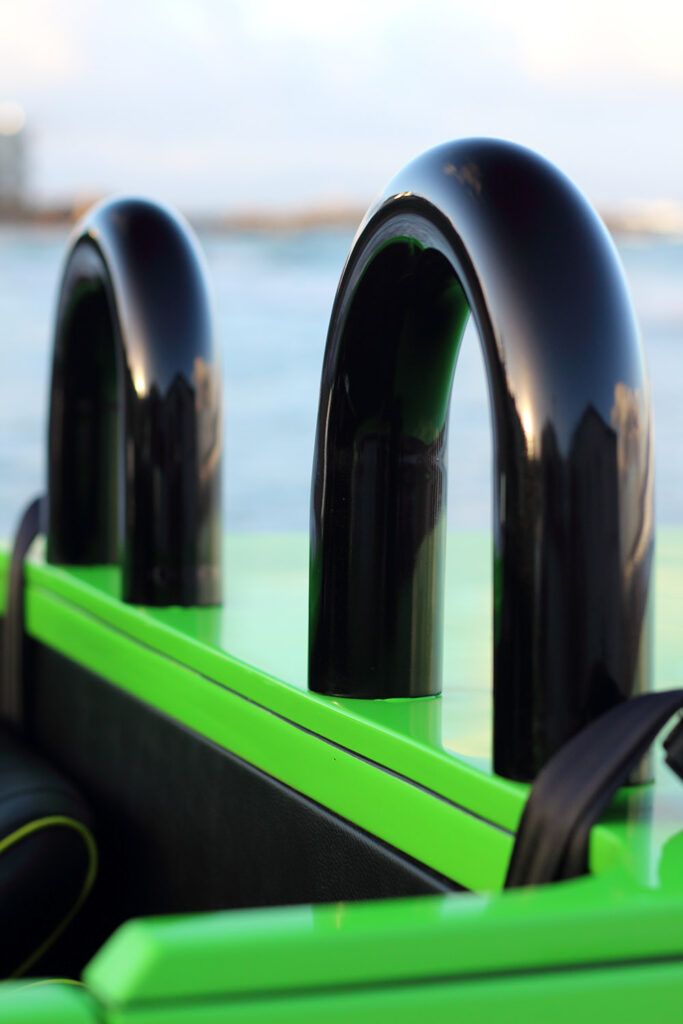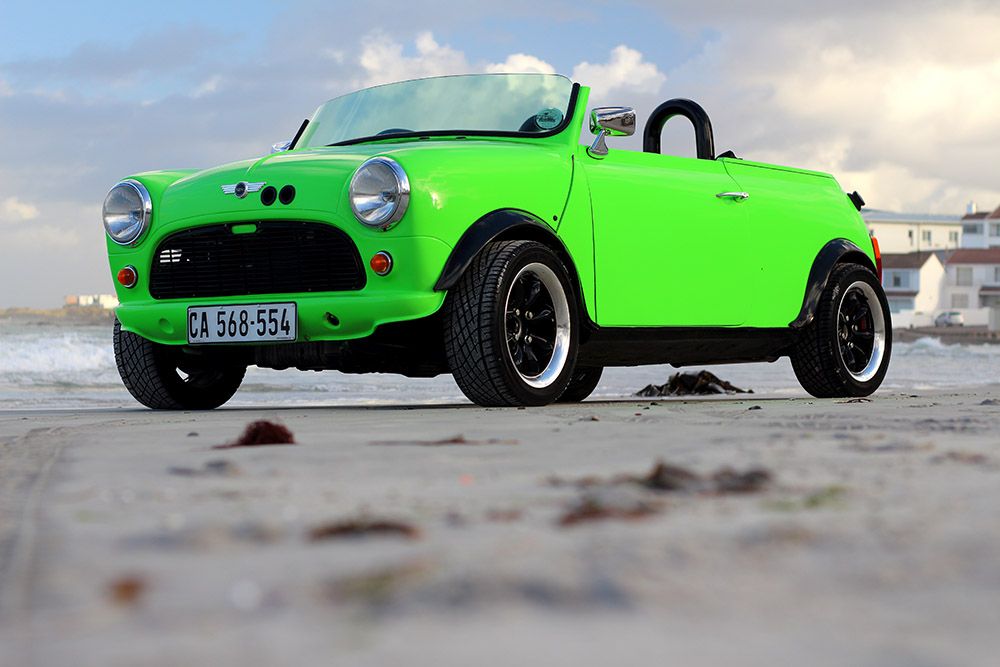
When you think of the Mini, a couple of things spring to mind. A student’s first car, The Italian Job (let’s go with the 1969 original, for the purposes of this discussion), two Monte Carlo rally wins, Twiggy, the Swinging 60s, and a whole lot of other pop culture idealism. And let’s not forget Mr. Bean. But do you ever stop and pause to think about whatever became of one of the world’s most iconic motoring names, before it was reinvented by BMW in the late 1990s? There’s no doubt a fair amount has fallen into disrepair or lie long-forgotten in scrapyards worldwide. Because let’s be honest, the Mini was not without its quirks and foibles. Stories abound of holes in the floor, and on cold rainy nights that can be (and you’ll forgive the pun) a bit of a dampener. For all their pop idol status, and after the takeover of the brand in the 70s by British Leyland (not a by-word for quality in the first place), the iconic Mini became just that – an icon of the 60s and early 70s.
By Morgan Malyon
Luckily for us, there are enthusiasts, dare I say it, fanatics, who take the love of these cars beyond mere ogling in timeworn magazines, or a trip down memory lane watching 60s movies starring Michael Caine. These are the few who take their love for these little machines and translate it into putting these much-loved cars back on the road, often in better condition than when they rolled off the factory floor.
Add Andrew Shadwell, an enthusiast, a fanatic and multiple Mini owner. A resurrection perfectionist. Having owned nigh on seven Minis since 1989, Andrew is the epitome of the Mini Fanatic. Starting with a 1978 Mini Clubman, which was his first Mini in 1989. The bug bit, and he has been resurrecting Minis ever since. He speaks fondly of Charlotte, a 1982 Mini Clubman that was lovingly restored in the small time frame of merely three months, that was passed on to a dear friend on her 18th birthday. Diagnosed with Lupus at the tender age of 14, and told she wouldn’t make it to 15, the car was handed to her as a birthday celebration gift, to signify her resolve and determination. Something Andrew does with the restoration of the Minis that have passed through his hands. The bug had definitely taken a chunk out of him.
So, this brings us to his latest Mini. The vehicle was first brought to his attention by Andrew Booysen from Mini Fare in Cape Town. An old Clubman was rebuilt into an ice cream truck by the previous owners. It would be kitted with typical ice cream truck equipment, including a generator, which made for an interesting sight. So, Andrew rode to the rescue. Quite literally. He took possession of the car in 2014, it was a literal write-off in anyone’s book. But from the offset, he envisaged an end product, a car that would be a phoenix and rise from the ashes. Just in bright green. Very bright green. And so the process started.
It would eventually become an evolutionary process during the restoration. A restoration that would ultimately take six months. Luckily these cars are small. With an idea in mind, Andrew set out on the rebuild. It started with the car being stripped to its bare essentials, the original shell. The roof was removed to make way for the classical speedster look, one not often unassociated with the likes of 30s Chevy Coupes and Model A Fords. Once relieved of its roof, the shell was sent for chemical dipping, removing any original paints and clear coats, and any remnants of aftermarket palette work that may have been done. He was now down to the bare metal. The perfect template to do as he wished.
Next on the agenda was to ensure that the car was retrofitted with some lightweight materials, but looked as original as possible. The joys of fibreglass are that you can mould it to pretty much any shape you want. In this instance, the shape of a 1960s Mini front end. And it would appear that Andrew’s skills with fibreglass are as good as his skills in restoration. An original fibreglass front end that was bought turned out to be a nasty purchase, so Andrew created his own, to perfectly fit the front, the naked frame. A fibreglass tailgate and rear deck followed, and the mould was complete.
However, as any structural engineer will attest, if you lop off the most rigid part of a car’s structure, you’re going to get some wobble and flex. Additional steel was added to the frame to reinforce the structure, to make it as tight as a drum, and provide that legendary Mini cornering ability (Paddy Hopkirk will be the first to put his hand up in agreement) when it was needed most. Because surely, with a speedster, the point is to do exactly that – speed? And size doesn’t really matter now does it?
As an aside, during the 60s and the 70s, in the infancy of British Touring Cars, Minis were an exhilarating sight on the tracks of Great Britain. Slugging it out initially with Jaguar MK III V8s, Ford Anglias and Ford Falcons, and latterly with Chevy Camaros and Ford Mustangs (those of massive V8 ilk). The Mini provided the stereotypical David and Goliath spectacle, being outstripped on the quicker parts of the circuits, but more than gaining with its nimble and agile approach to corners. But I digress.
The shape of the now one-of-a-kind speedster was emerging. The evolution was nearing its completion, with some subtle personal touches still to come. The first of these was a customised instrument binnacle, poached from an MK1 Mini with colour-coded internals. An agreeable, exclusive touch that lifts the interior in a fashionable, yet classy manner.
This was coupled with a set of black rollover hoops, to accentuate the bright green gloss work adorning the compact body. Drop in two small black bucket seats (you must have a passenger to experience the thrill), and you have the perfect mix of classic black and bright green. Next was the need to address the external bits and pieces. In his own words: I’m a minimalistic person, the more minimalistic, the better. And from the outside, it’s a stunning result.
But the exterior and interior are nothing without the mechanicals to make it go and make it stop. Under the bonnet lives a Mini A-series engine. Although now somewhat modified. Rebored from its original 1275cc to a bigger 1380cc, the original output of 42Kw has been substantially increased. Andrew was not willing to share what the new output was, but judging by his grin, it’s significantly more than the original 42Kw.
Drop in 4 Mazda pistons, with astounding compression ratios, and bang, you have more than just a pocket rocket, you have a pocket ballistic missile. Punching fuel into this mixture is a single SU side-draught carburettor, providing the correct mix to ensure the little green machine has more than enough fuel for its soul.
However, this did not come without some initial problems. As Andrew explains, there were some issues regarding the car overheating. It was baffling at first because the car was fine until the loud pedal was mulched into the carpet. And then the troubles began. Luckily it was a simple fix thanks to Dennis Nathan. With some racing fuel thrown down its throat into the tank, and the fuel and air mixture adjusted just right, the overheating issue was resolved. An inexpensive fix for a potentially massive headache.
But what runs must stop. VW Golf MK1 disc brakes were fitted to ensure a speedy stop while running on some customised 13-inch wheels and sticky rubber. All ensuring that the unstoppable force never met the immovable object. All of this is aided by the best suspension available for a Mini. Mini suspension.
All of this could not be done without help. That came in the form of infinite patience from his wife, Louise, and the fabrication and moulding skills of Mike Sipoxo, his mould builder. Without his amazing eye for detail, the ultimate outcome would not have been possible. As Louise so eloquently puts it: Andrew is an attention whore, and with this car, he gets it in spades. Something Andrew is quick to agree with. And in that colour, with that shape, and the uniqueness of the design, you can understand why.
In the end, one man’s love for a marque, his determination and his passion has resulted in a one-of-a-kind, award-winning car (having taken gold at the Whales and Wheels festival in Hermanus when it was on show with his friends of the Cape Town Mini Owners Club). Today the Green Monster continues to turn heads and thrill wherever it may be seen. It’s the age-old story of a potentially lost soul that was rescued and reinvigorated by someone who was determined not to see it consigned to the annals of history.






















